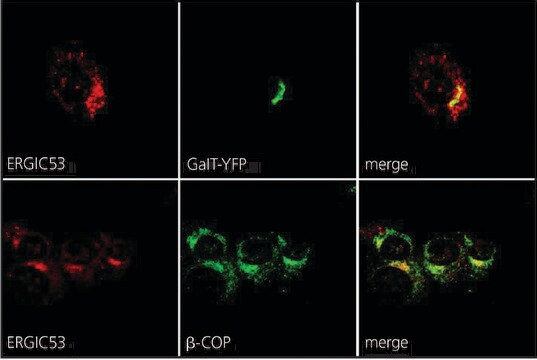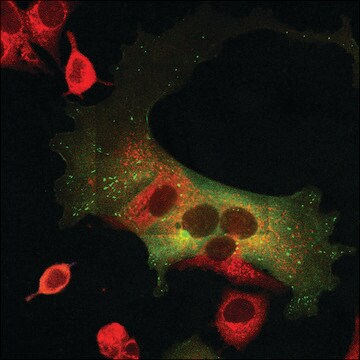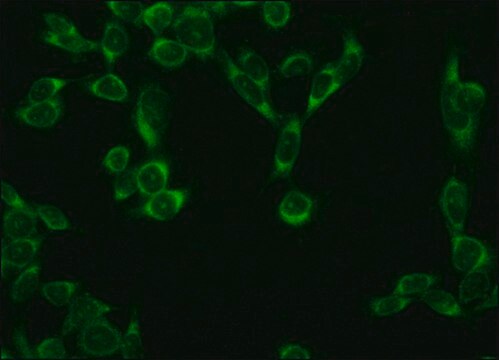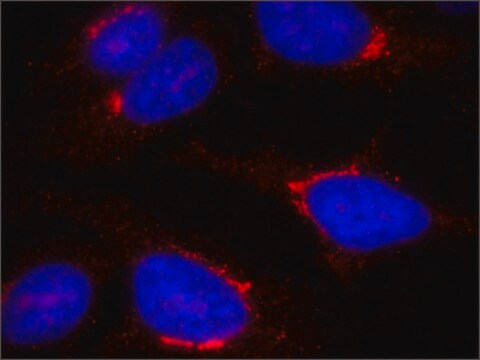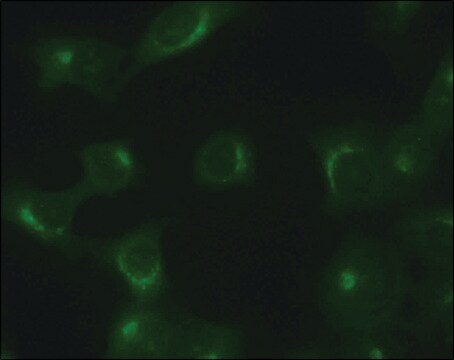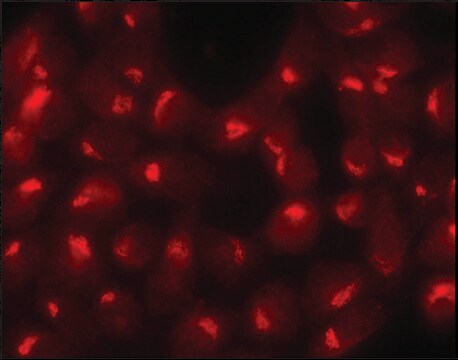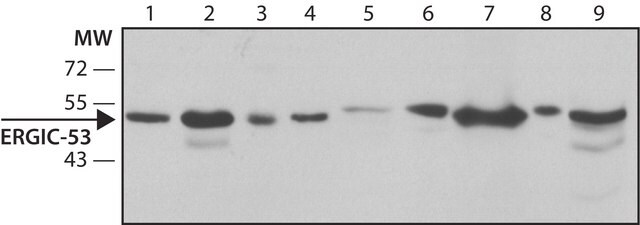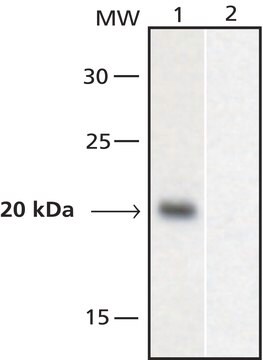G6160
Monoclonal Anti-β-COP antibody produced in mouse
clone maD, ascites fluid
Synonyme(s) :
Anti-BARMACS, Anti-COPB
About This Item
Produits recommandés
Source biologique
mouse
Niveau de qualité
Conjugué
unconjugated
Forme d'anticorps
ascites fluid
Type de produit anticorps
primary antibodies
Clone
maD, monoclonal
Contient
15 mM sodium azide
Espèces réactives
human, rat, hamster, monkey
Technique(s)
indirect immunofluorescence: 1:80 using cultured Chinese hamster ovary (CHO) cells
microarray: suitable
western blot: 1:1,000 using a preparation of stacked Golgi membranes from rat liver
Isotype
IgG1
Numéro d'accès UniProt
Conditions d'expédition
dry ice
Température de stockage
−20°C
Modification post-traductionnelle de la cible
unmodified
Informations sur le gène
human ... COPB1(1315)
rat ... Copb1(114023)
Description générale
Spécificité
Immunogène
Application
Immunofluorescence (1 paper)
- analysis at a working dilution of 1:1000 using subcellular proteins from rat PC12 (pheochromocytoma) cells
- analysis of gradient fractions of cerebral microvessels to confirm the separation of plasma membrane lipid raft domains from intracellular membranous components
- detection of the Golgi marker protein β-COP in exosome-enriched extracellular microvesicles (eMV) preparations from untreated HeLa cells
It is suitable for immunostaining of β-coatomer, that is used as a intracellular, Golgi protein marker :
- to confirm that CD14 staining is localized to the cell surface of HAEC
- for examining the localization of Meltrin β in the Golgi apparatus and its vicinity in neurons prepared from developing dorsal root ganglia of mouse embryos
- in NB4 and NB4-LR1 cells to examine the colocalization of PKA regulatory subunits
- in CHO cells to examine colocalization of GFP-Rab24
It is suitable for use in cell-surface ELISA of human aortic endothelial cells (HAEC)
It is also suitable for western blot analysis at a working dilution of 1:1000 using a preparation of stacked Golgi membranes from rat liver, for indirect immunofluorescence at a working dilution of 1:80 using cultured Chinese hamster ovary (CHO) cells and for microarray.
Actions biochimiques/physiologiques
Clause de non-responsabilité
Vous ne trouvez pas le bon produit ?
Essayez notre Outil de sélection de produits.
Produit(s) apparenté(s)
Code de la classe de stockage
10 - Combustible liquids
Classe de danger pour l'eau (WGK)
nwg
Point d'éclair (°F)
Not applicable
Point d'éclair (°C)
Not applicable
Certificats d'analyse (COA)
Recherchez un Certificats d'analyse (COA) en saisissant le numéro de lot du produit. Les numéros de lot figurent sur l'étiquette du produit après les mots "Lot" ou "Batch".
Déjà en possession de ce produit ?
Retrouvez la documentation relative aux produits que vous avez récemment achetés dans la Bibliothèque de documents.
Notre équipe de scientifiques dispose d'une expérience dans tous les secteurs de la recherche, notamment en sciences de la vie, science des matériaux, synthèse chimique, chromatographie, analyse et dans de nombreux autres domaines..
Contacter notre Service technique